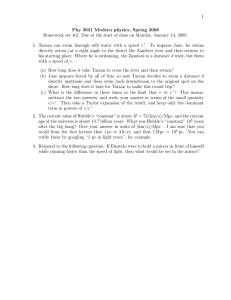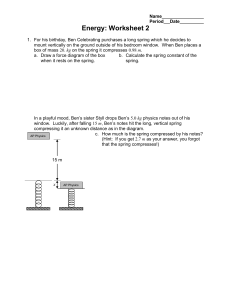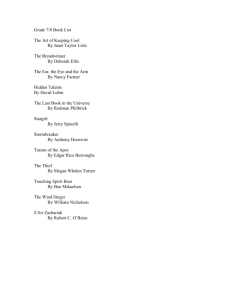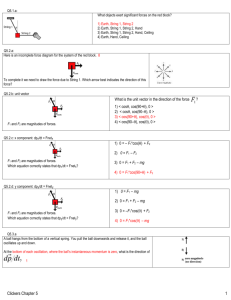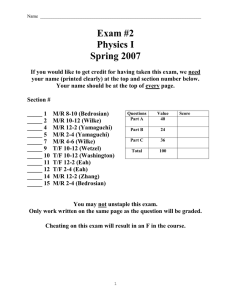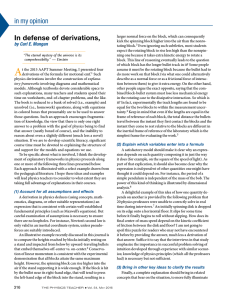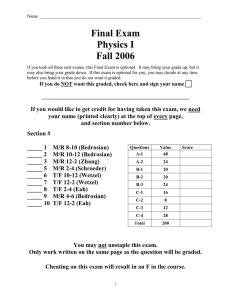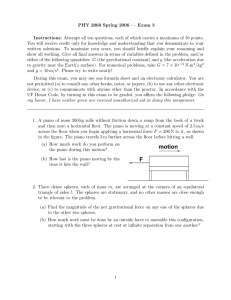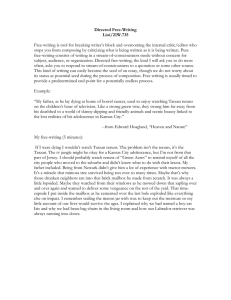letters to the editor Analytically solving Tarzan’s dilemma
advertisement
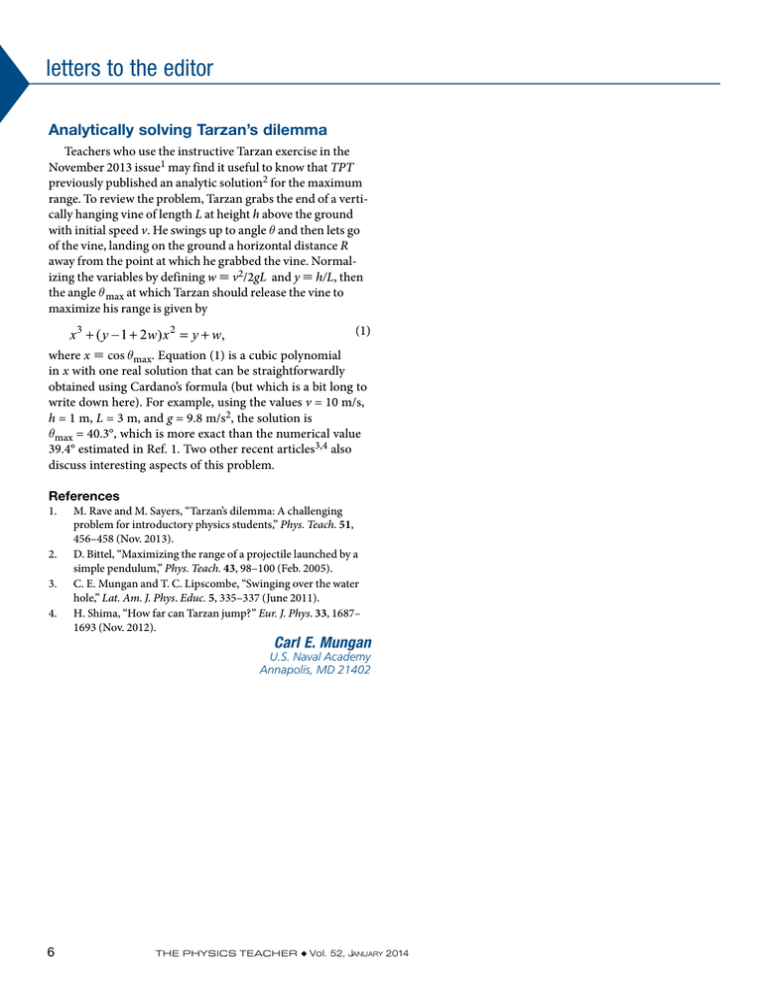
letters to the editor Analytically solving Tarzan’s dilemma Teachers who use the instructive Tarzan exercise in the November 2013 issue1 may find it useful to know that TPT previously published an analytic solution2 for the maximum range. To review the problem, Tarzan grabs the end of a vertically hanging vine of length L at height h above the ground with initial speed v­. He swings up to angle q and then lets go of the vine, landing on the ground a horizontal distance R away from the point at which he grabbed the vine. Normalizing the variables by defining w v2/2gL and y h/L, then the angle q max at which Tarzan should release the vine to maximize his range is given by (1) where x cos qmax. Equation (1) is a cubic polynomial in x with one real solution that can be straightforwardly obtained using Cardano’s formula (but which is a bit long to write down here). For example, using the values v = 10 m/s, h = 1 m, L = 3 m, and g = 9.8 m/s2, the solution is qmax = 40.3°, which is more exact than the numerical value 39.4° estimated in Ref. 1. Two other recent articles3,4 also discuss interesting aspects of this problem. References 1. 2. 3. 4. M. Rave and M. Sayers, “Tarzan’s dilemma: A challenging problem for introductory physics students,” Phys. Teach. 51, 456–458 (Nov. 2013). D. Bittel, “Maximizing the range of a projectile launched by a simple pendulum,” Phys. Teach. 43, 98–100 (Feb. 2005). C. E. Mungan and T. C. Lipscombe, “Swinging over the water hole,” Lat. Am. J. Phys. Educ. 5, 335–337 (June 2011). H. Shima, “How far can Tarzan jump?” Eur. J. Phys. 33, 1687– 1693 (Nov. 2012). Carl E. Mungan U.S. Naval Academy Annapolis, MD 21402 6 : The Physics Teacher ◆ Vol. 52, January 2014

